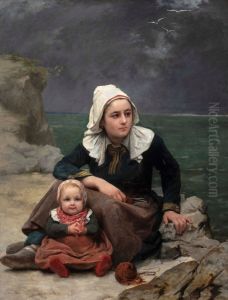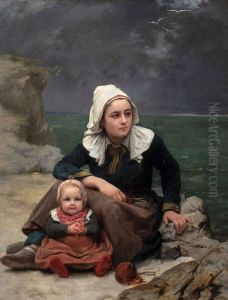Felicie Schneider Paintings
Félicie Schneider was a French painter born in Paris in 1831. Her life and works are an interesting reflection of the artistic movements and societal changes in France during the 19th century. Schneider was known for her detailed genre paintings, portraits, and still lifes, which captured the essence of her era with a unique blend of realism and sentimentality.
Schneider's artistic journey began in her youth, influenced by the vibrant cultural atmosphere of Paris. She studied under various prominent artists of the time, which helped refine her technique and artistic vision. Unlike many of her female contemporaries who were often sidelined in the art world, Schneider managed to gain recognition for her work, showcasing her paintings at the Paris Salon, an essential venue for artists seeking to make a name for themselves in the competitive Parisian art scene.
Throughout her career, Schneider's works were celebrated for their intricate detail, vibrant color palette, and the ability to capture the subtleties of human expression and domestic life. Her portraits often depicted women and children, reflecting the societal roles and expectations of her time, yet imbuing her subjects with a sense of dignity and inner life that transcended mere representation.
Despite her success, Félicie Schneider, like many women artists of her era, did not achieve the same level of lasting fame as her male counterparts. However, in recent years, there has been a renewed interest in her work, as art historians and collectors alike seek to acknowledge and celebrate the contributions of women to the history of art. Félicie Schneider passed away in 1908, leaving behind a legacy that continues to inspire and captivate those who discover her paintings. Her works remain a testament to her skill, sensitivity, and the unique perspective she brought to the French art world of the 19th century.




